Previous Post
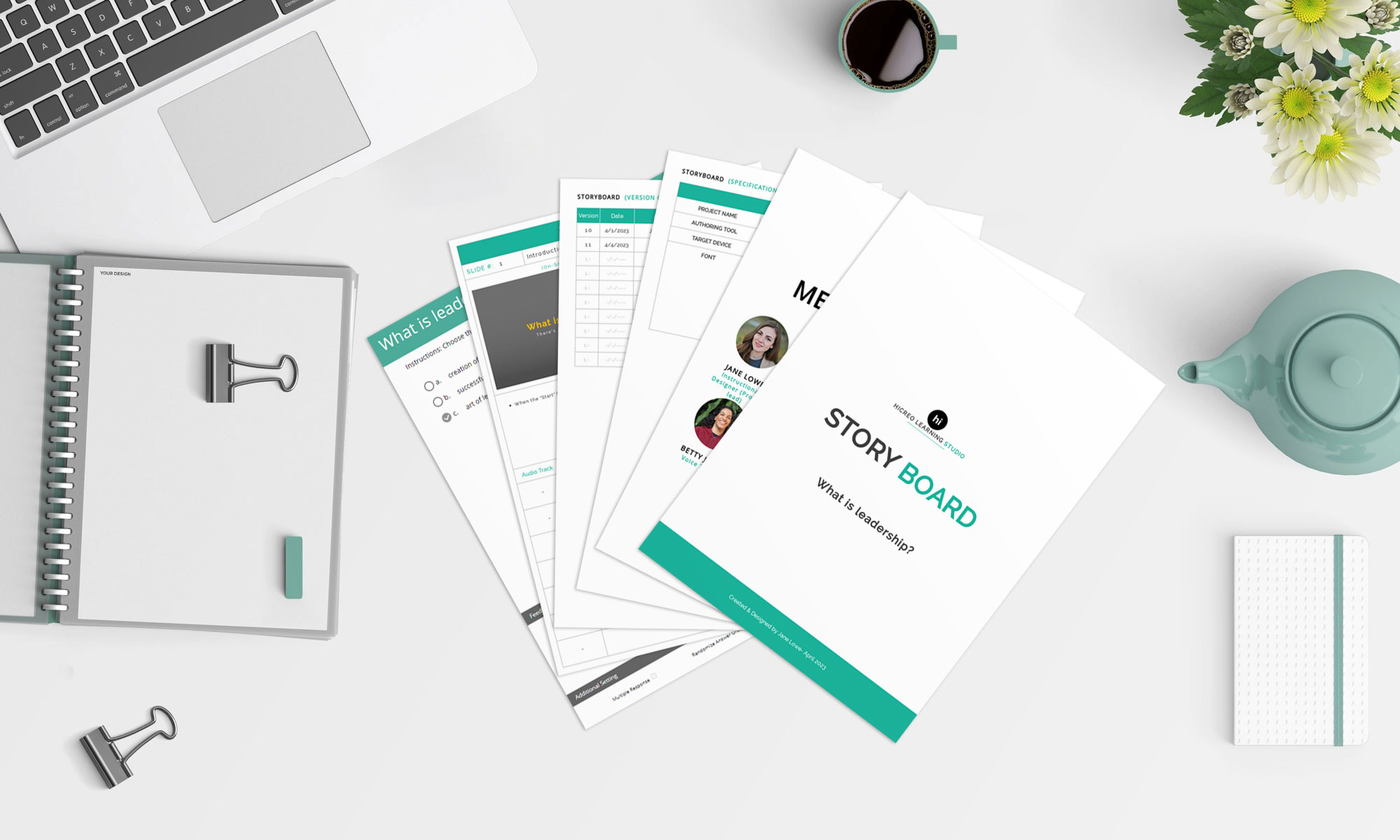
Awesome eLearning Storyboard Templates for Free
eLearning storyboard templates are the backbone of any successful eLearning program. Storyboards are the visual representation of instructional content and the essential tool for content creators responsible for developing effective online courses. Storyboards are also incredibly helpful for those who work in instructional design, training, and development. Indeed, spending time creating educational content without one is both inefficient and haphazard.
Amazing Free eLearning Storyboard Templates for Download


Latest Blogs
Amazing Free eLearning Storyboard Templates for Download
Awesome eLearning Storyboard Templates for Free
Top 5 Free eLearning Authoring Tools for 2023
The top 5 Storyline 360 alternative eLearning authoring tools
Understanding eLearning: A Comprehensive Guide to Online Learning
Topics
Picture this: You're designing an eLearning course, pouring countless hours into content creation, navigation structures, and multimedia elements. But wait! Have you ever felt like something is missing? Something that ensures seamless flow visualizes the learner's journey and captures the essence of your instructional design masterpiece. That's where eLearning storyboards come into play, serving as the missing link that bridges the gap between your vision and its successful execution.
Free eLearning Storyboard Templates for Download
Importance Of Storyboards
Benefits Of Using Storyboard Templates
FAQS
Before diving deeper, let's establish the significance of storyboards in the eLearning realm. Imagine a construction project without blueprints or a movie without a script. Chaotic, right? Similarly, in eLearning development, storyboards are the blueprint that brings structure, organization, and clarity to your course. They visually represent the entire eLearning journey, mapping out each screen, interaction, and assessment, ensuring a cohesive and effective learning experience.

Now, let's discuss the unparalleled benefits of using eLearning storyboard templates. These pre-designed frameworks offer a treasure trove of advantages that streamline your development process, enhance collaboration, and ultimately lead to superior eLearning outcomes. Leveraging storyboard templates saves valuable time, eliminates guesswork, and harnesses the power of tried-and-tested instructional design principles.
Storyboard templates empower you to organize content effortlessly, visualize learner pathways and maintain consistency throughout your eLearning course. They serve as a guiding light, enabling you to focus on the creative aspects of your eLearning project while ensuring a solid foundation for instructional effectiveness. With templates, you can rapidly iterate, experiment, and fine-tune your course, bringing your vision to life with unmatched precision and efficiency.
Storyboard templates empower you to organize content effortlessly, visualize learner pathways and maintain consistency throughout your eLearning course. They serve as a guiding light, enabling you to focus on the creative aspects of your eLearning project while ensuring a solid foundation for instructional effectiveness. With templates, you can rapidly iterate, experiment, and fine-tune your course, bringing your vision to life with unmatched precision and efficiency.
Are you ready to elevate your eLearning game? Take advantage of the transformative advantages of eLearning storyboards and the incredible convenience of storyboard templates. Explore the world of eLearning storyboard templates, readily available online, and discover the freedom to unleash your creativity while maintaining instructional excellence. Whether you're a seasoned instructional designer or an aspiring eLearning enthusiast, it's time to embrace the power of storyboards and revolutionize your eLearning experiences.
Free eLearning Storyboard Templates for Download
Free eLearning Storyboard Template #1
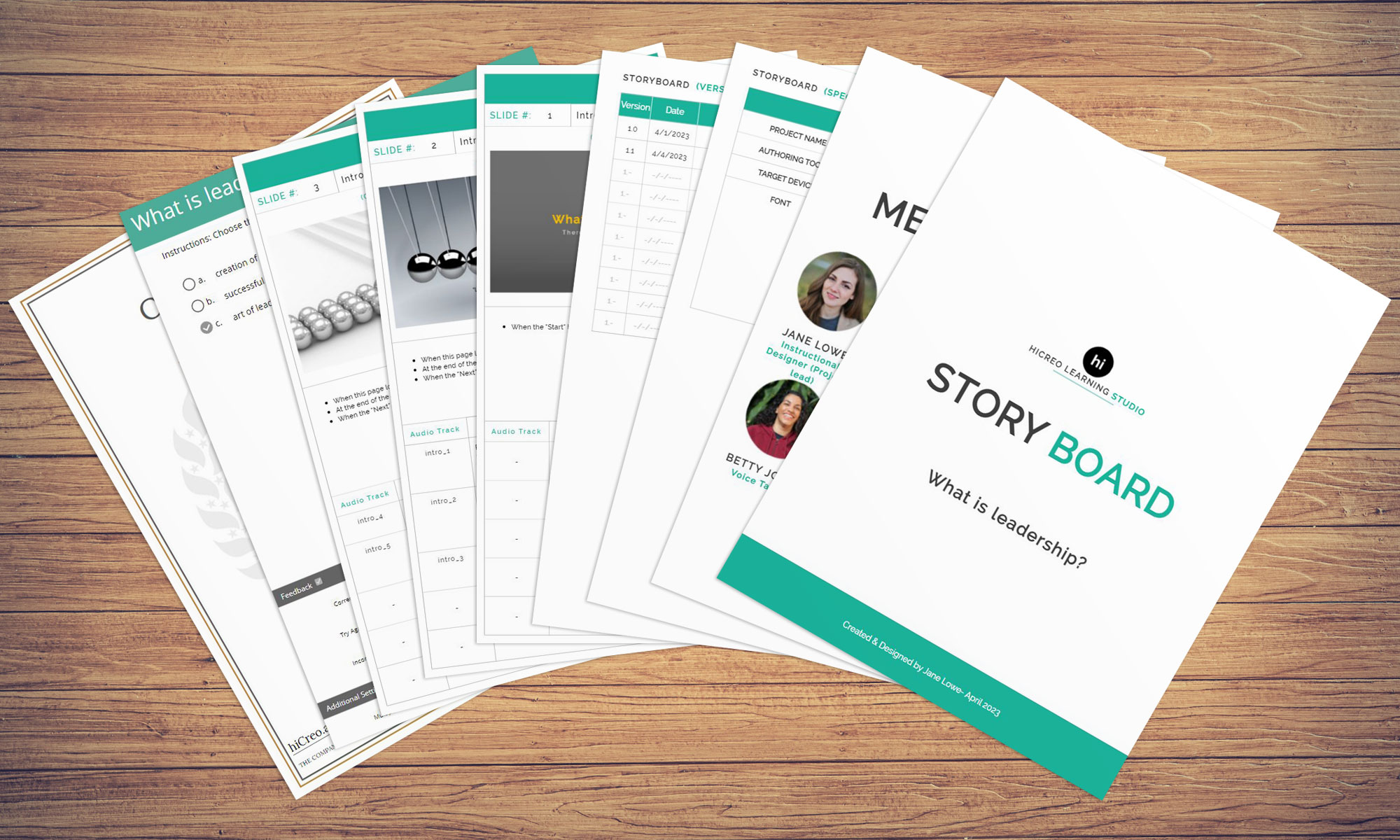
Course Outline
+
- Main
- Meet Our Team
- Design Specification
- Version Control
- Introduction
- ELO A: Essential Competencies for All Level of Leadership
- Essential competencies for all levels of leadership
- Check On Learning
- Summary
- ELO B: Leadership Styles
- Leadership Styles
- Check On Learning
- Summary
- ELO C: Types of Leadership Roles
- Types of Leadership Roles
- Check On Learning
- Summary
- Certificate Of Completion
Free eLearning Storyboard Template #2

Course Outline
+
- Main
- Meet Our Team
- Design Specification
- Version Control
- Introduction
- Lesson 1: Introduction to Nonverbal Communication
- Defining nonverbal communication
- Importance of nonverbal communication in everyday interactions
- Lesson 2: Understanding Body Language
- Different types of body language (e.g., kinesics, proxemics, haptics)
- How to read and interpret body language
- How body language can be used to influence others
- Lesson 3: Facial Expressions and Microexpressions
- Understanding the different types of facial expressions
- The significance of microexpressions in interpreting emotions
- Techniques for reading and interpreting facial expressions
- Lesson 4: Proxemics and Paralanguage
- Understanding the role of space and distance in nonverbal communication
- How to use proxemics to influence others
- The importance of paralanguage (e.g., tone, pitch, and rhythm) in nonverbal communication
- Lesson 5: Nonverbal Cues in Business and Professional Settings
- How to use nonverbal communication in the workplace
- Nonverbal communication in job interviews and presentations
- Navigating cultural differences in nonverbal communication
- Lesson 6: Advanced Techniques and Applications
- How to use nonverbal communication in persuasion and negotiation
- Detecting deception through nonverbal cues
- Nonverbal communication in virtual and online interactions
- Lesson 7: Conclusion and Next Steps
- Recap of key concepts
- Recommended resources for further learning and development
- Final thoughts on the importance of mastering nonverbal communication.
- Course Summary
- Quiz
Free eLearning Storyboard Template #3
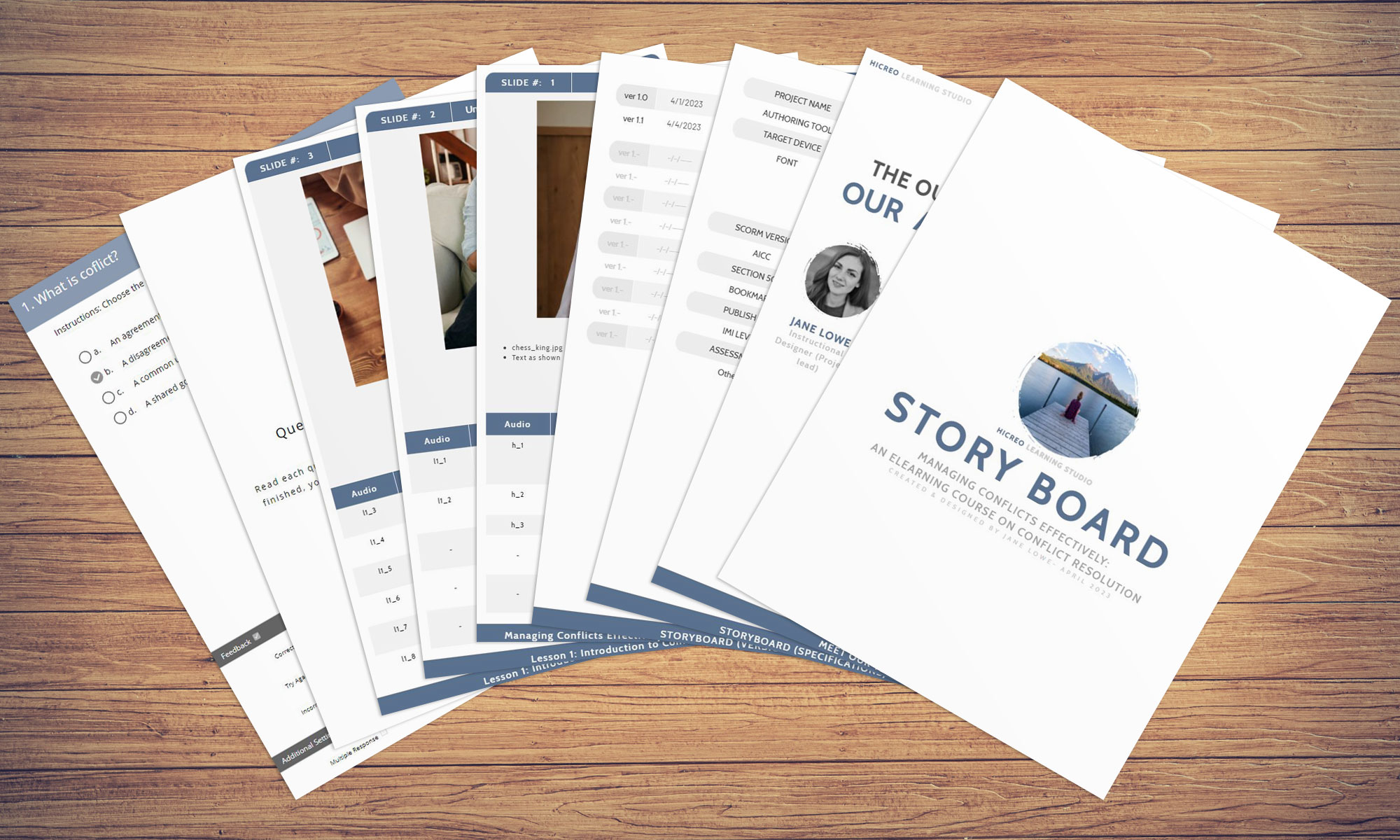
Course Outline
+
- Main
- Meet Our Team
- Design Specification
- Version Control
- Course Introduction
- Lesson 1: Introduction to Conflict Resolution
- Understanding conflict and its impact on relationships and organizations
- The benefits of effective conflict resolution
- Lesson 2: Understanding Different Conflict Resolution Techniques
- Mediation
- Negotiation
- Collaboration
- Compromise
- Arbitration
- Litigation
- Lesson 3: Identifying the Root Cause of Conflicts
- Understanding emotions and perceptions in conflict
- The role of power and interests in conflict
- Communication breakdowns in conflict
- Lesson 4: Communication Skills for Conflict Resolution
- Active listening and empathy
- Effective verbal and non-verbal communication
- Effective verbal and non-verbal communication
- Lesson 5: Dealing with Difficult People and Situations
- Handling passive-aggressive behavior
- Dealing with emotionally charged conflicts
- Navigating conflicts involving authority and hierarchy
- Lesson 6: Conflict Resolution in the Workplace
- Managing workplace conflicts effectively
- Understanding workplace conflict resolution policies and procedures
- Building a positive work environment through conflict resolution
- Lesson 7: Application of Conflict Resolution Skills in Real-Life Situations
- Role-playing and scenario-based exercises
- Practice and feedback on conflict resolution skills
- Final project: creating a conflict resolution plan for a real-life situation
- Course Summary
- Quiz
- Certificate of Completion
Free eLearning Storyboard Template #4
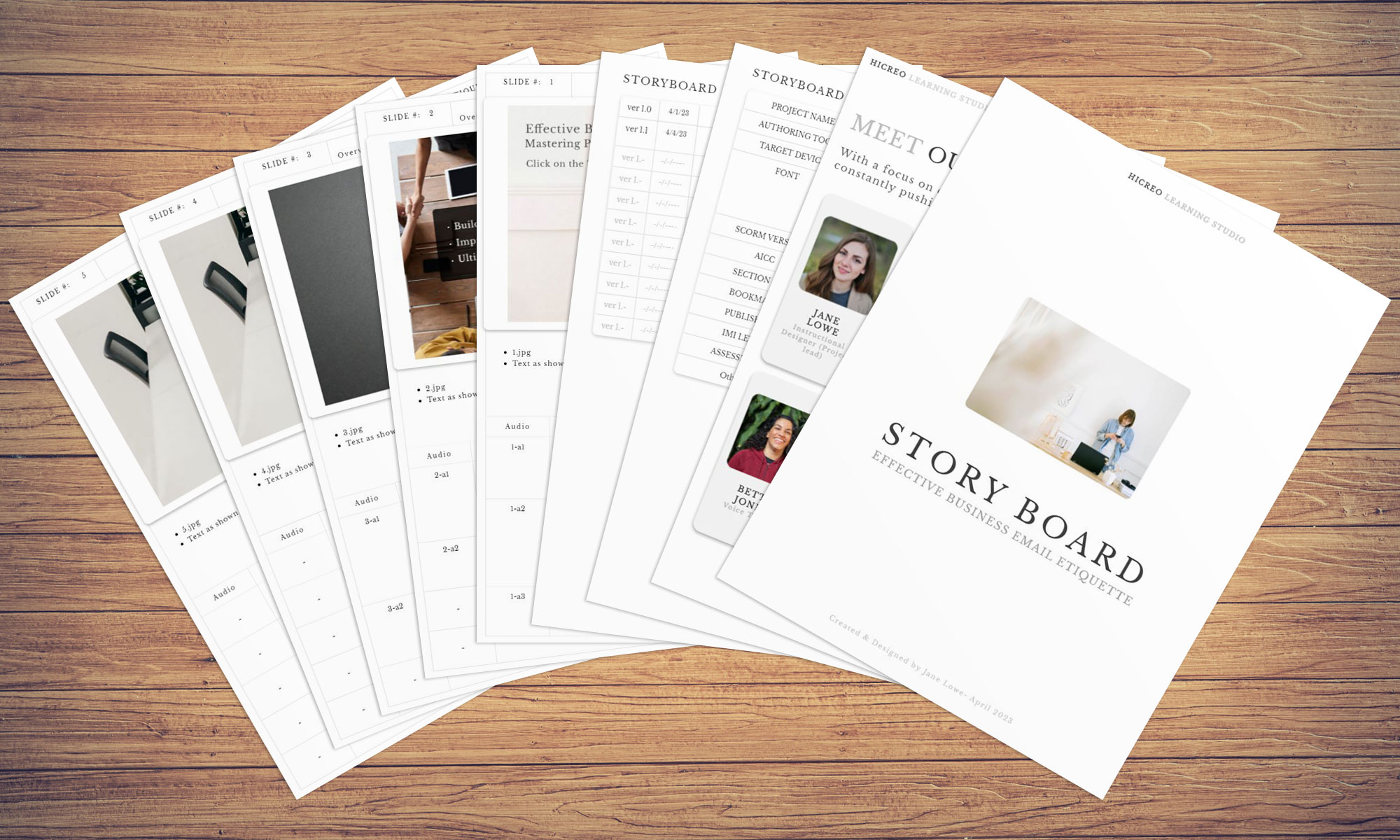
Course Outline
+
- Main
- Meet Our Team
- Design Specification
- Version Control
- Introduction
- Lesson 1: Introduction to Business Email Etiquette
- Overview of the importance of professional communication in the workplace
- Setting the tone and purpose of emails
- Lesson 2: Writing Effective Emails
- Best practices for crafting clear, concise, and effective emails
- Using proper grammar and punctuation
- Formatting and layout considerations
- Lesson 3: Responding to Emails
- Techniques for responding to different types of emails (e.g., complaints, requests, etc.)
- Tips for handling difficult or sensitive situations
- Best practices for maintaining a professional tone
- Lesson 4: Managing Email Overload
- Strategies for managing a high volume of emails
- Tips for prioritizing and organizing emails
- Best practices for avoiding burnout
- Lesson 5: Professional Communication in a Virtual Workplace
- Navigating the challenges of remote work
- Maintaining professionalism and building relationships through virtual communication
- Best practices for video conferencing and online meetings
- Lesson 6: Ethics and Legal Considerations
- Understanding the legal and ethical implications of email communication
- Best practices for maintaining the confidentiality and data security
- Tips for avoiding liability and protecting your organization
- Summarize the key takeaways
- Review of best practices for effective business email etiquette
- Quiz
Free eLearning Storyboard Template #5
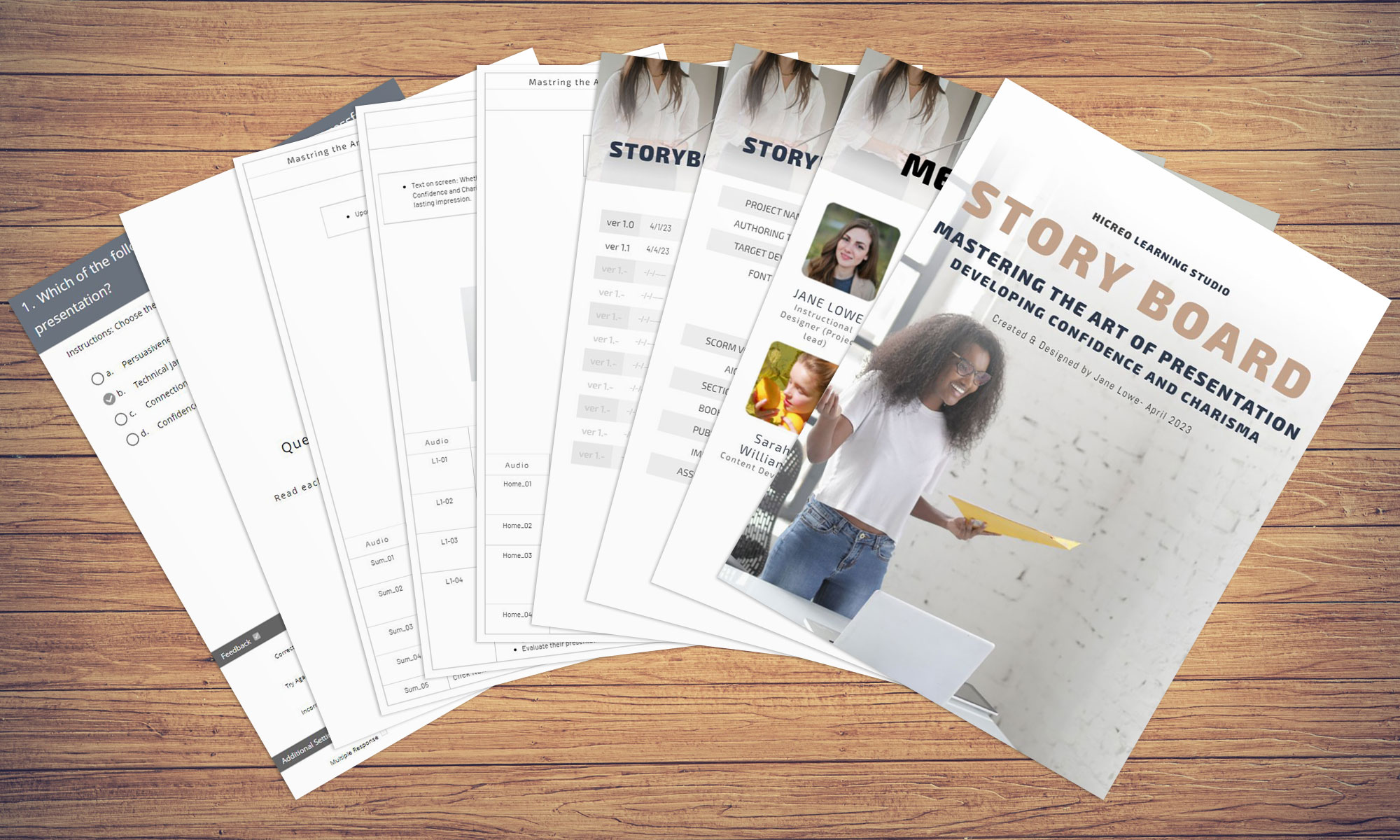
Course Outline
+
- Main
- Meet Our Team
- Design Specification
- Version Control
- Introduction
- Lesson 1: Introduction
- Overview
- Lesson 2: Understanding the Basics of Presentation
- Definition of presentation
- Importance of presentation skills
- Types of presentations
- Lesson 3: Planning and Preparation
- Understanding your audience
- Defining the purpose and goals of the presentation
- Creating a presentation outline
- Gathering and organizing content
- Lesson 4: Delivering the Presentation
- Confidence-building techniques
- Body language and non-verbal communication
- Voice projection and pace D. Use of visual aids
- Lesson 5: Enhancing Presentation Effectiveness
- Storytelling and humor
- Engaging the audience
- Handling nerves and distractions
- Handling questions and objections
- Summary
- Quiz
- Certificate of Completion
Importance Of Storyboards
eLearning storyboards play a crucial role in developing effective and engaging online courses. Here are some key reasons why eLearning storyboards are important:
- Visualizing the Learning Experience: One of the primary purposes of eLearning storyboards is to represent the entire learning experience visually. Storyboards help instructional designers plan and structure the course content, visualize the flow of information, and determine the sequence of activities and assessments. This visual roadmap allows designers to ensure the learning materials are logically organized and aligned with the desired learning outcomes.
- Enhancing Instructional Design: eLearning storyboards act as blueprints for instructional designers, guiding them in creating well-designed and cohesive online courses. They provide a framework for organizing content, determining the placement of multimedia elements, and designing interactive activities. Storyboards allow designers to carefully plan instructional strategies, ensuring that the course effectively delivers the intended message and engages learners.
- Facilitating Collaboration: eLearning projects often involve multiple stakeholders, such as subject matter experts, graphic designers, and developers. Storyboards serve as a common reference point for all team members, fostering collaboration and ensuring everyone is on the same page. Storyboards facilitate effective communication, feedback, and iteration among team members by visually representing the course structure and content, resulting in a more cohesive and successful product.
- Streamlining Development Process: Developing an eLearning course can be complex and time-consuming. Storyboards help streamline the development process by providing a roadmap for content creation and multimedia integration. They help identify potential issues or gaps in the course early on, allowing for efficient revisions and adjustments. This saves time and effort by reducing the need for significant rework during the later stages of development.
- Assessing Instructional Flow and Interactivity: Storyboards allow instructional designers to assess the instructional flow and interactivity of the course before actual development begins. By visualizing the sequence of activities, assessments, and multimedia elements, designers can identify any gaps or redundancies in the content. This enables them to fine-tune the learning experience, ensuring that the course engages learners effectively and promotes active participation.
- Providing Documentation and Reference: eLearning storyboards are documentation and reference materials throughout the course development. They offer a comprehensive overview of the course structure, learning objectives, instructional strategies, and content organization. This documentation becomes valuable during the development phase and for future updates, revisions, or when collaborating with new team members.
Benefits Of Using Storyboard Templates
Using eLearning storyboard templates for online course development provides several benefits:
- Timesaving: eLearning storyboard templates save time by providing a pre-designed framework that designers can quickly populate with content. Instead of starting from scratch, designers can leverage the template's structure and placeholders, allowing them to focus more on customizing the content to meet the specific learning objectives of the course.
- Consistency: Storyboard templates ensure consistency in the design and layout of online courses. Using templates, designers can maintain a uniform structure and formatting throughout the course, creating a cohesive and professional learning experience for students. Consistency also helps learners navigate the course more easily as they become familiar with the layout and know what to expect from each module or lesson.
- Organized Content: Storyboard templates provide a structured framework for organizing course content. They guide instructional designers in categorizing and sequencing information, ensuring a logical flow of concepts and activities. This organization helps learners understand and retain the content more effectively, as it follows a logical progression and builds upon previous knowledge.
- Visual Representation: Templates offer a visual representation of the course layout, providing a clear overview of how the content will be presented to learners. Visualizing the course structure helps designers identify gaps or inconsistencies in the content flow and allows them to adjust early in the development process. It also helps stakeholders, such as subject matter experts or reviewers, to better understand the course structure and provide feedback.
- Collaboration and Communication: Storyboard templates facilitate collaboration among instructional designers, subject matter experts, and other team members involved in course development. Templates are a common reference point, enabling effective communication and feedback exchange. Using templates, team members can easily review and provide input on the course structure, content placement, and overall design, fostering a collaborative and iterative development process.
- Customization and Flexibility: While storyboard templates provide a starting point, they are also highly customizable. Designers can tailor the templates to fit their course objectives, branding guidelines, and instructional strategies. This flexibility allows for creative expression and personalization while maintaining the template's underlying structure and organization.
- Efficiency in Updates and Revisions: Storyboard templates facilitate future updates and revisions to the course. As templates provide a standardized structure, making changes to the course becomes more efficient and less time-consuming. Designers can easily modify or add content within the existing framework, ensuring a consistent user experience across updates or different iterations of the course.